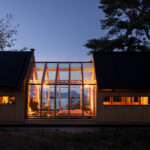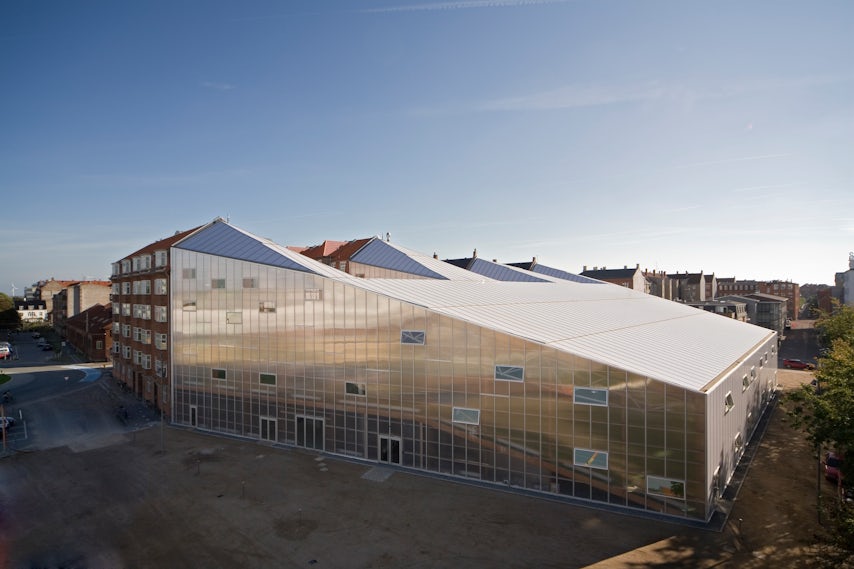The Big Apple is among the top 10 noisiest cities in the world and most certainly the loudest in North America. Finding moments of peace and quiet are hard to come by. But a new exhibition at the Solomon R. Guggenheim Museum by artist Doug Wheeler offers a space of near silence.

PSAD Synthetic Desert III
In “PSAD Synthetic Desert III (1971),” Wheeler has transformed a museum gallery into a semi-anechoic chamber designed to suppress all but the lowest levels of ambient sound. The room’s lighting and configuration are also designed to induce an optical impression of infinite space. For the project, originally conceived in the 1960s and 70s, Wheeler was inspired by his own experience in the deserts of northern Arizona where near-silent conditions profoundly influence the visual sensation of distance.
Revolutionary acoustic technology from New Jersey–based chemical company, BASF Corp. was used in the installation. The Guggenheim’s presentation features 400 pyramids and 600 wedges of Basotect®, BASF’s flexible, open-cell melamine foam with high sound-absorption properties.
“Silence as we know it measures at 30 decibels,” said Doyle Robertson, an expert on melamine foam for BASF, in a statement, “and Wheeler’s semi-anechoic chamber will measure in the range of ten to fifteen decibels — so quiet you might just be able to hear your own heartbeat.”

WAVE acoustic modules made of Basotect®, Spah, D; photo courtesy BASF
BASF Corp. is an affiliate of BASF SE in Ludwigshafen, Germany. Their products, including Basotect, are used for various applications in architectural, construction and industrial projects. Basotect is even used to quiet elevator cabs inside New York City skyscrapers, where it insulates the cabs from the noise of super-speed elevators that top out at 23 miles per hour.
Basotect not only absorbs sound, it is naturally fire resistant, free of glass or mineral fibers, lightweight — it’s 99 percent air by volume — and can be shaped into any desirable form. It can also be coated any color or wrapped in textiles. The material therefore can enrich the aesthetics of any architectural project whether it’s an exhibition, sports arena, music venue or recording studio.

Colored conical absorber elements, Texaa, F; photo courtesy BASF
Additionally, modern tastes and building design trends are leaning more toward open-floor plans, more glass for natural light and less material used on the interior. With more hard surfaces, sound waves are reflected and increase the overall noise level. Basotect’s high sound absorption can lessen the impact of sound in these spaces.
“Basotect empowers and inspires architects, designers, sound engineers to create spaces that have proper acoustics that are aesthetically pleasing,” said Robertson. “It’s the ideal material for specification in both public and private spaces.”
Just like light and air, sound has a major influence on the health and well-being of the urban environment and its inhabitants. With the opportunity to get away from the noisy city, New Yorkers will be wrapping a line around the Guggenheim to experience unheard depths of silence inside the “Synthetic Desert.”
Doug Wheeler’s “PSAD Synthetic Desert III” is on view now on level seven of the Solomon R. Guggenheim Museum in New York City from March 24 to August 2, 2017. For more information, visit: basf.us/basotect-nyc.









